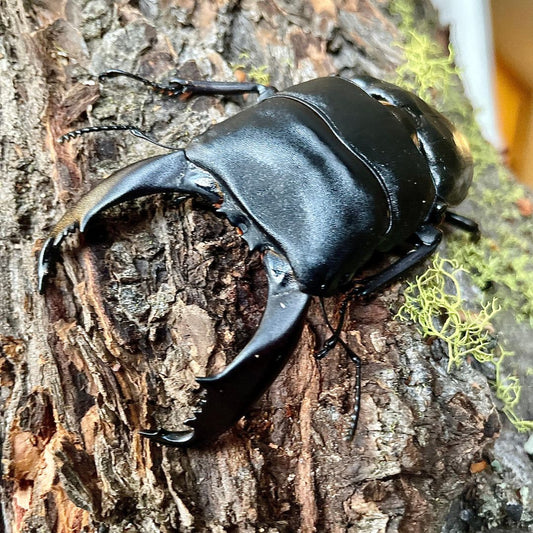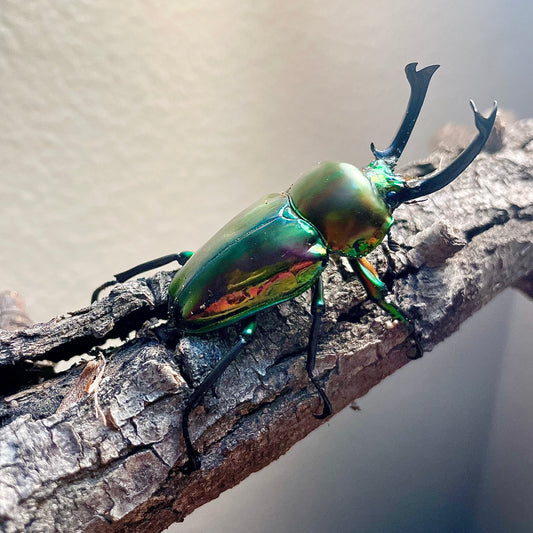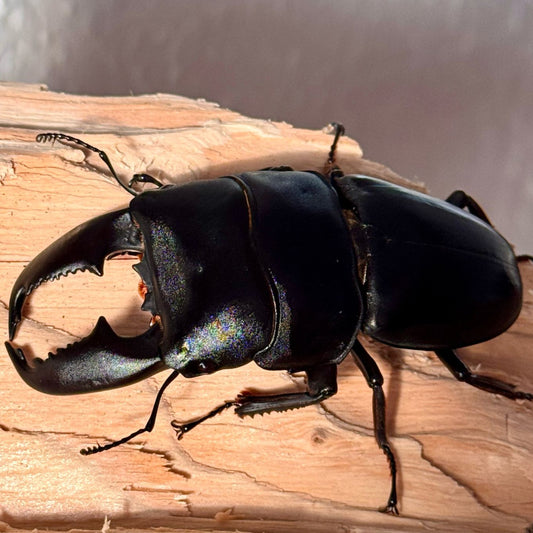Insect growth patterns primarily fall into two categories:
- Incomplete Metamorphosis — Where larvae and adults are quite similar in appearance, like crickets and cockroaches.
- Complete Metamorphosis — Where larvae and adults look completely different, such as butterflies and bees.
And beetles belong to the latter: Complete Metamorphosis.
- Egg Stage:
The life cycle of these beetles begins when adult females lay their eggs. Typically, the eggs are laid in a suitable environment, often near or within decomposing wood or organic matter.
- First-Instar Larva (L1):
After hatching from the egg, the young beetle enters the first-instar larval stage (L1). At this stage, the larva is quite small and feeds on the surrounding organic material. L1 is generally a short stage.
- Second-Instar Larva (L2):
Following the first molt, the larva advances to the second-instar stage (L2). In this stage, the larva continues to grow and develop, and its body proportions change.
- Third-Instar Larva (L3):
The third-instar larval stage (L3) is the longest stage in the developmental process. During this stage, the larva grows significantly and may develop distinctive characteristics, depending on the beetle species. For some species, such as Rhinoceros Beetles and Stag Beetles, L3 is when the larvae can grow large and develop their characteristic features, like impressive mandibles.
- Pupa:
When the third-instar larva has eaten its fill and feels the time is right, it seeks a sturdy place to build a room and pupates inside this "pupal chamber." After pupation, it takes several days or months for the larva to morph into an adult beetle.
- Emerging Adult:
After becoming an adult, the beetle doesn't immediately become active. It waits for some time for its internal organs to mature and rests quietly in the pupal chamber. Occasionally, it flutters its wings and legs during this time known as the "pupal rest," which is a very vulnerable period for the beetle. Different species and temperatures affect the duration of this rest, varying from as short as 2-3 weeks to as long as a whole year. It's only when the beetle is both physically and mentally prepared that it will break the pupal chamber and begin searching for food and potential mates.
Tips:
- Once a beetle completes its pupal stage, its body size remains fixed. It won't grow larger regardless of the amount of food provided!
- The duration of each stage can vary depending on factors such as environmental conditions, temperature, and the specific species of beetle. The transformation from egg to adult is a remarkable process that showcases the unique life cycle of these beetles.



